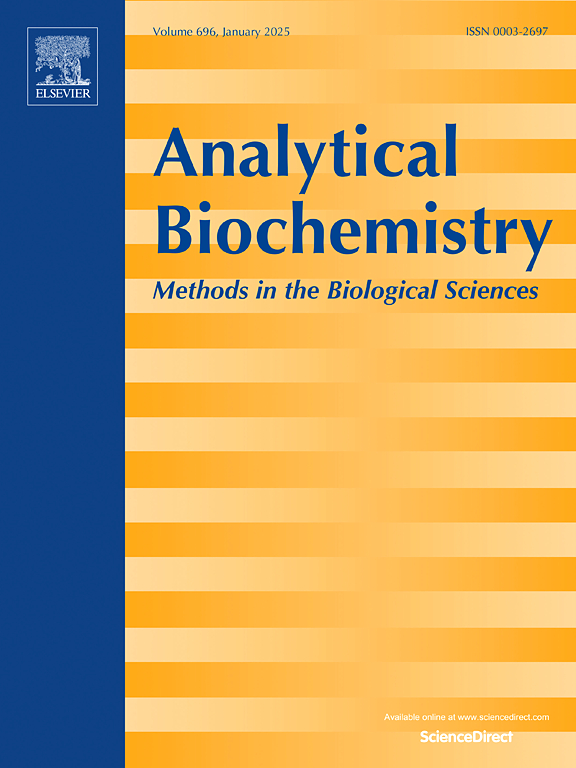基于hsp65和tuf基因的伊朗东北部流行分枝杆菌的系统发育分析。
IF 2.5
4区 生物学
Q2 BIOCHEMICAL RESEARCH METHODS
引用次数: 0
摘要
分枝杆菌物种的系统发育分析可以为它们的进化关系提供有价值的见解,并有助于确定物种和菌株。本研究利用热休克蛋白65 (hsp65)基因和延伸因子(EF)-Tu (tuf)基因两个遗传标记对分枝杆菌进行了系统发育分析。从疑似肺结核患者身上采集临床样本。从痰样本中分离出细菌,并在Löwenstein-Jensen培养基上培养。30株分枝杆菌分离株(抗酸+,培养+)纳入我们的研究。提取DNA后,对hsp65 (441 bp)和tuf (741 bp)基因进行pcr扩增和测序。采用Neighbor-Joining法推断分离株的进化史,并用MEGA X软件进行分析。系统发育树通过1000次重复的bootstrap分析进行验证。引导值超过70%被认为是分支支持良好的指示。系统发育树揭示了分枝杆菌种间的整体自然关系。我们的研究结果表明,tuf基因为鉴定不同的分枝杆菌种类提供了优越的分辨率,其系统发育谱与hsp65基因密切一致。然而,这两种标记都不能有效地区分结核分枝杆菌复合体(MTBC)的成员。该研究强调了tuf基因的高区分能力,建议将其作为系统发育分析的主要基因组标记。本文章由计算机程序翻译,如有差异,请以英文原文为准。
Phylogenetic analysis of prevalent Mycobacterium species in Northeastern Iran based on hsp65 and tuf genes
Phylogenetic analysis of Mycobacterium species can provide valuable insights into their evolutionary relationships and help to identify species and strains. In this study, two genetic markers, including the heat shock protein 65 (hsp65) gene and the elongation factor (EF)-Tu (tuf) gene were used for phylogenetic analysis of Mycobacterium species.
Clinical samples were collected from patients suspected of tuberculosis. Bacterial isolates were obtained from sputum samples and cultured on Löwenstein-Jensen medium. Thirty Mycobacterium isolates (acid-fast +, culture +), were included in our study. After DNA extraction, hsp65 (441 bp) and tuf (741 bp) genes were PCR-amplified and sequenced. The Neighbor-Joining method was employed to infer the evolutionary history of the isolates and the analyses were conducted with MEGA X software. The phylogenetic trees were validated using bootstrap analysis with 1000 replicates. Bootstrap values above 70 % considered indicative of well support for the branches. The phylogenetic trees revealed the overall natural relationships among Mycobacterium species. Our results demonstrated that the tuf gene provides superior resolution for identifying distinct mycobacterial species, closely aligning its phylogenetic profile with the hsp65 gene. However, neither of the markers was effective in distinguishing members of the Mycobacterium tuberculosis complex (MTBC). This study highlights the high discriminatory power of the tuf gene, recommending its use as a primary genomic marker for phylogenetic analysis.
求助全文
通过发布文献求助,成功后即可免费获取论文全文。
去求助
来源期刊

Analytical biochemistry
生物-分析化学
CiteScore
5.70
自引率
0.00%
发文量
283
审稿时长
44 days
期刊介绍:
The journal''s title Analytical Biochemistry: Methods in the Biological Sciences declares its broad scope: methods for the basic biological sciences that include biochemistry, molecular genetics, cell biology, proteomics, immunology, bioinformatics and wherever the frontiers of research take the field.
The emphasis is on methods from the strictly analytical to the more preparative that would include novel approaches to protein purification as well as improvements in cell and organ culture. The actual techniques are equally inclusive ranging from aptamers to zymology.
The journal has been particularly active in:
-Analytical techniques for biological molecules-
Aptamer selection and utilization-
Biosensors-
Chromatography-
Cloning, sequencing and mutagenesis-
Electrochemical methods-
Electrophoresis-
Enzyme characterization methods-
Immunological approaches-
Mass spectrometry of proteins and nucleic acids-
Metabolomics-
Nano level techniques-
Optical spectroscopy in all its forms.
The journal is reluctant to include most drug and strictly clinical studies as there are more suitable publication platforms for these types of papers.
 求助内容:
求助内容: 应助结果提醒方式:
应助结果提醒方式:


